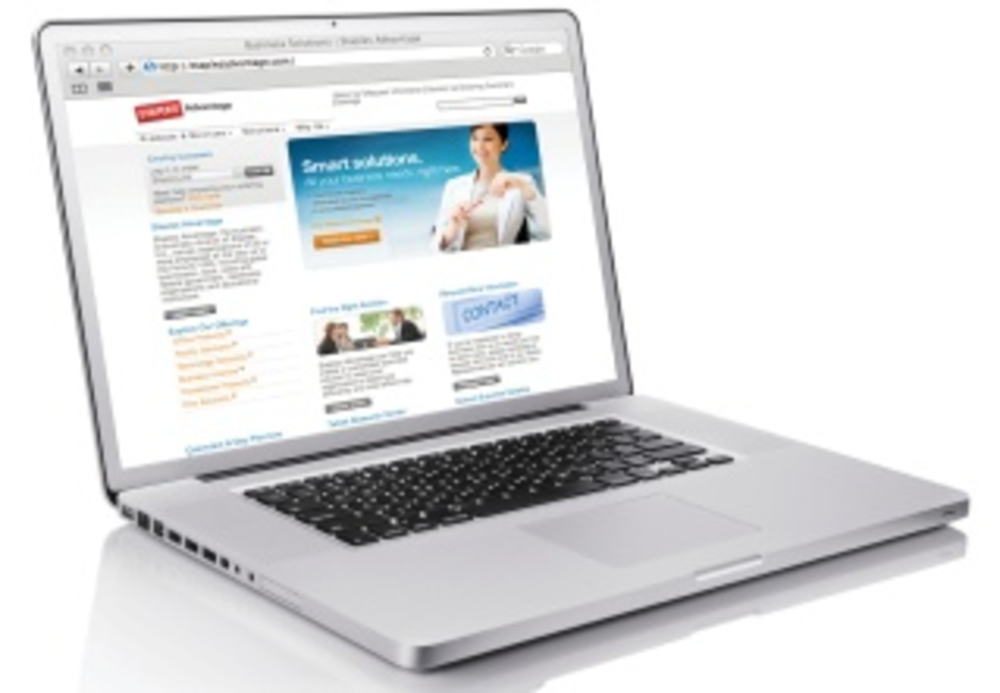Several b-to-b merchants are taking their cue from consumer-oriented e-commerce sites to provide business customers with a friendlier, streamlined online buying experience. Marketers including Staples, DHL Express and J.J. Keller & Associates have all recently reworked their b-to-b e-commerce sites to offer business consumers an alternative to the traditional enterprise-to-enterprise sales funnel experience.
Staples launched a new e-commerce site for its b-to-b division, Staples Advantage, on Nov. 16. The new site is designed to feature faster and easier search navigation, alternative product recommendations and enhanced site customization, says Laura Brooks, VP of b-to-b e-commerce at Staples.
“There’s been an industry-wide shift from b-to-b sales to doing business over the Web,” notes Brooks. “Clearly, businesses and consumers are embracing the Web to shop and stay connected. Businesses are taking advantage of automated, streamlined processes online that eliminate errors and offer cost-savings.”
A quicker, computerized approach to selling is a driver of the b-to-b e-commerce movement, but industry experts mostly credit b-to-b consumers’ personal shopping experiences for what Andy Hoar, senior analyst at Forrester Research, calls the “b-to-c-ifying of b-to-b e-commerce.”
“What’s driving this is that most b-to-b consumers are also b-to-c consumers,” Hoar explains. “B-to-b execs have been asking their e-commerce teams why they can’t have the same experience on b-to-b as b-to-c. The bar has been raised, and b-to-b consumers expect a better experience.”
Rob Garf, VP of product and solutions marketing at e-commerce services company Demandware, agrees with Hoar’s assertion. “Business customers are also consumers and they have gotten to a point of high expectations,” he explains. “They’re Web-savvy in their consumer life and more empowered than ever before.”
B-to-b companies can better serve their customers by providing “a more convenient check-out process, more visibility into pricing, discounts, more access to account information, and profile information,” Garf adds.
Shipping services provider DHL launched a revamped website for U.S. customers in October that featured several variations of the upgrades Garf suggests, including improved navigation, search, paperless [customs] clearance and conversion calculators. While the site is meant to serve both b-to-b and b-to-c consumers, its new Resource Center provides a hub for small- and medium-sized businesses to receive shipping guidance and other information, says Robert Mintz, communications manager at DHL Express.
Aside from a more consumer-driven approach to online commerce, b-to-b companies can leverage online selling to reduce errors and to gain key insights about prospects and customers.
“If executed properly, b-to-b e-commerce can help reduce errors that might have occurred [had someone manually processed an order],” says Bill Holtshouser, program director of commerce strategy and product management at IBM Corp. “I would suggest that there are far more opportunities for errors in traditional processes. If you have a product that requires complex configurations and the rules can be properly defined automatically, there can be tremendous value in reducing the amount of errors that go into selling.”
IBM helped J.J. Keller & Associates, a b-to-b business regulations management company with more than 350,000 clients, revamp its b-to-b e-commerce site in July of last year. The goal of the relaunch was to “improve the overall customer experience, including site reliability and uptime,” explains Adrienne Hartman, corporate e-commerce manager at J.J. Keller.
On the new site, J.J. Keller improved merchandising tactics, including what customers saw when they searched a particular product. “On the old site, if you searched the word ‘placard’ you’d get a list of 219 items with text only and no image,” Hartman remembers. “Now you will see fewer results and a nice banner with ads on the site to help you refine search results further.”
J.J. Keller’s work with IBM reaped great rewards. Comparing the percentage of customers that converted on-site before and after the launch, J.J. Keller witnessed a conversion rate increase of 25%. Average order size increased 4%, and revenue increased as well. Hartman would not reveal a revenue rate increase.
“A business consumer is still a person,” she says. “They get used to shopping on sites like Amazon and they want the same experience when they shop for their profession.”







